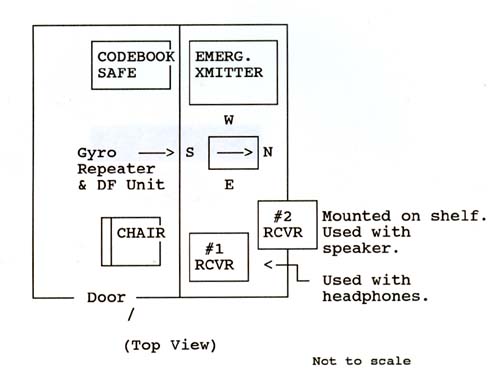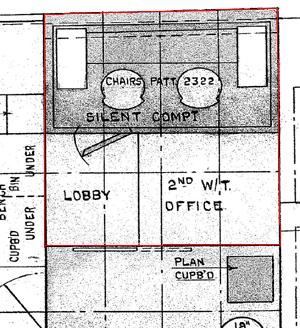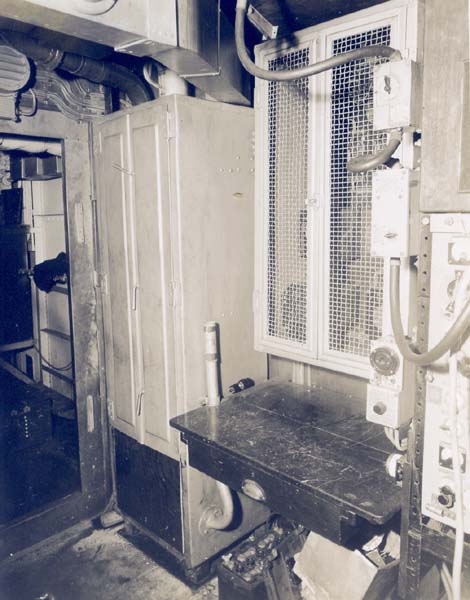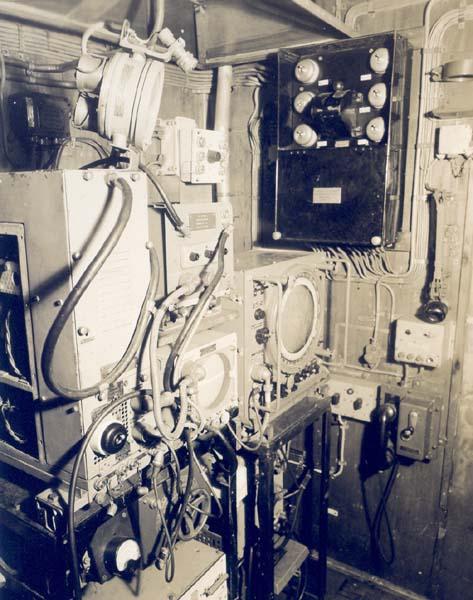As more archival material is discovered about the equipment in the 2nd Wireless Office, a picture is beginning to emerge of what was there during HAIDA's WWII days.
 |
| The 2nd Wireless Office was situated between frames 140 and 144. Top of photo is port while the right side is forward. This drawing specifies two National HRO receivers, one transmitter (believed to be a type 60EM) plus a battery cabinet. The HRO receivers may not have been fitted and instead British Admiralty B28 receivers were substituted as suggested by the 1946 photo below. (Via HMCS HAIDA Library) |




